*Feng Shui* Your Studio To Maximize Creative Flow
August 31, 2012
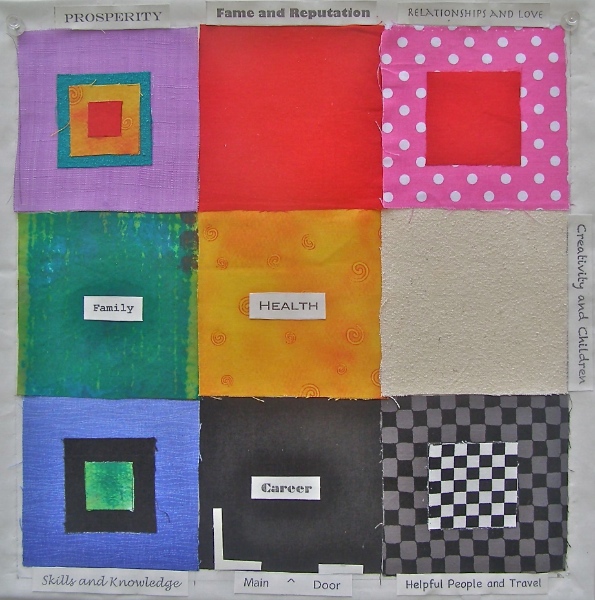 Feng shui [fuhng shwey] [is] the Chinese art or practice of creating harmonious surroundings that enhance the balance of yin and yang, as in arranging furniture or determining the siting of a house (from Dictionary.com).
Feng shui [fuhng shwey] [is] the Chinese art or practice of creating harmonious surroundings that enhance the balance of yin and yang, as in arranging furniture or determining the siting of a house (from Dictionary.com).
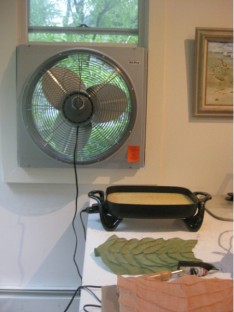 When a consultant once warned me that my treasured catalpa tree near the front door interrupted the flow of energy, I cast the idea of using feng shui principles in my studio aside.
When a consultant once warned me that my treasured catalpa tree near the front door interrupted the flow of energy, I cast the idea of using feng shui principles in my studio aside.
But second thoughts crept in recently when a studio makeover was unavoidable. I’ve gotten interested in encaustic and – after a year’s worth of workshops – needed to experiment in my own space.
The problem: every class started with a lecture on safety, especially the need for ventilation to pull the fumes from hot wax away from the workspace. My worktable in the middle of the room was far from the window where an exhaust fan could go. Moving the table into that space would also mean moving mountains of art materials, equipment, unfinished projects and books accumulated over decades.
The task seemed daunting. Might a philosophical approach make the challenge more interesting? Putting skepticism behind me, I googled “feng shui for artist studio” and lo! – up popped a page full of websites.
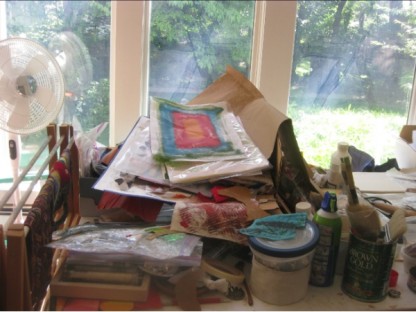 The first click led to Rodika Tchi’s Feng Shui for Artists: Clutter, Creativity and Feng Shui, which assured me that I was on the right track. Tchi understands the studio environment: “Contrary to the popular belief about feng shui [translated, “wind and water”], an ideal feng shui space is not the Zen-looking serene space.”
The first click led to Rodika Tchi’s Feng Shui for Artists: Clutter, Creativity and Feng Shui, which assured me that I was on the right track. Tchi understands the studio environment: “Contrary to the popular belief about feng shui [translated, “wind and water”], an ideal feng shui space is not the Zen-looking serene space.”
The ideal is that space with the best energy to support a specific activity intended for it.
“If you are applying feng shui for your meditation and yoga room, you are looking to evoke as much feng shui serene, peaceful energy as possible. However, if you are designing your creative studio, you are looking for a vibrant feng shui energy to support the flow of your creativity.”
The ideal creative space needs to hold the rhythms of both musing and making.
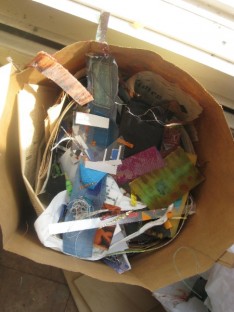 Tchi corrected my impulse to face a window wall (perpendicular to the window for the fan) overlooking a garden since the door would then be behind me. A person engaged in creative work should always be able to see who enters the room. Looking into the room, the light is behind me, and I’m in the east corner—an auspicious location, according to Cherry Jeffs at suite101.com.
Tchi corrected my impulse to face a window wall (perpendicular to the window for the fan) overlooking a garden since the door would then be behind me. A person engaged in creative work should always be able to see who enters the room. Looking into the room, the light is behind me, and I’m in the east corner—an auspicious location, according to Cherry Jeffs at suite101.com.
Jeffs succinctly describes ch’i, the concept underlying feng shui, as energy that can be positive or negative. “[Ch’i] is always present in every building and location, sometimes flowing gently, sometimes swirling dangerously and sometimes simply stagnant. Harnessing this energy and optimizing its effect is always the goal in any situation where feng shui is applied.”
Jeffs advocates purging what’s not in use, including artwork that no longer seems relevant. She considers purging a chance to offer work as rewards for support given by friends or family or as donations to community causes or charity. “[Donating outdated work] has the happy result, not only of the artists feeling ‘lighter,’ but of increasing their standing among their community.”
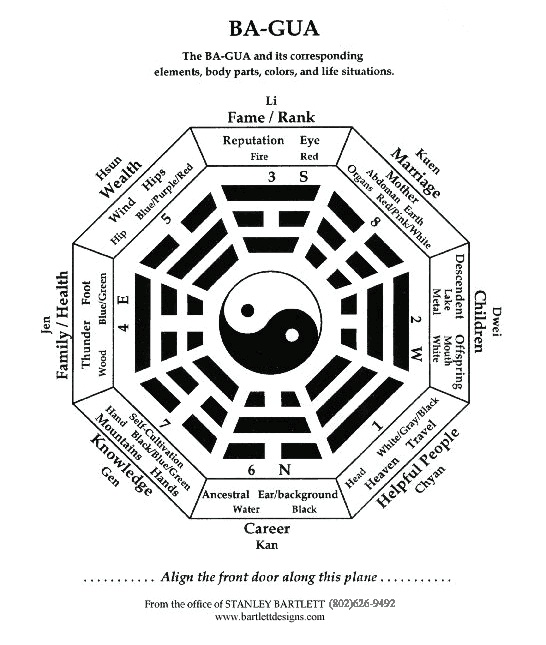
An unidentified contributor at artmarketingsecrets.com wrote of life “opening up like a flower” in a well-balanced environment. This site includes an illustration of feng shui as a traditional Chinese octagonal diagram; surrounding a central yin/yang symbol, each of eight divisions represents an aspect of life, along with the colors and materials associated it. For example white and metal appear in the “Creativity” area.
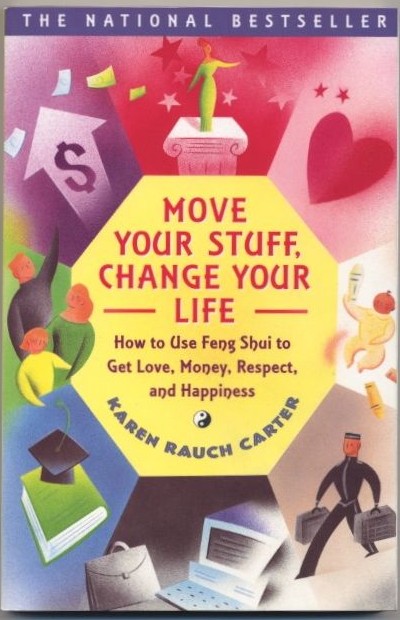 Too esoteric? Both this site and an entry by Jennifer Worick at www.craftstylish.com recommend the book, Move Your Stuff, Change Your Life by Karen Rauch Carter (SimonandSchuster.com). Worick writes: “[Carter] breaks down…feng shui into easy-to-understand concepts.”
Too esoteric? Both this site and an entry by Jennifer Worick at www.craftstylish.com recommend the book, Move Your Stuff, Change Your Life by Karen Rauch Carter (SimonandSchuster.com). Worick writes: “[Carter] breaks down…feng shui into easy-to-understand concepts.”
In a nutshell, there is a 9-square “bagua” that you apply to your home – depending on where your front door is. Within that format, individual squares are “guas” corresponding to the areas in the octagonal design. (See the 9-sqare gua at top of page.) These are: Prosperity, Fame & Reputation, Love & Relationships, Children & Creativity, Travel & Helpful People, Career, Skills & Knowledge, Family, and Health. (Health, instead of the yin/yang symbol, occupies the center.)
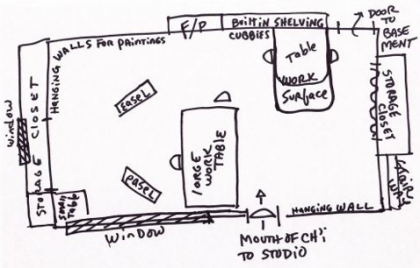 While I wasn’t planning to feng shui the whole house, I bought the book and found it helpful. Carter’s drawing of the bagua as a grid resembles the arrangement of squares in a 9-patch quilt. Chapter 11, “Our House Is a Very, Very Strange House,” shows adaptations of the grid to different shaped houses.
While I wasn’t planning to feng shui the whole house, I bought the book and found it helpful. Carter’s drawing of the bagua as a grid resembles the arrangement of squares in a 9-patch quilt. Chapter 11, “Our House Is a Very, Very Strange House,” shows adaptations of the grid to different shaped houses.
It struck me that a studio in itself could be a microcosmic feng shui universe. And that’s exactly what artist Katy Allgeyer describes in generous detail on her blog, fengshuibyfishgirl.com, with a slideshow of studio photos and a floor plan (shown here). As an example of intentional placement, her Prosperity Corner has two large floor-to-ceiling walls where she shows new work when clients come in. I took Allgeyer’s advice and hung new work on the wall right inside the entrance to my studio to invite prosperity (see before and after photos, below).
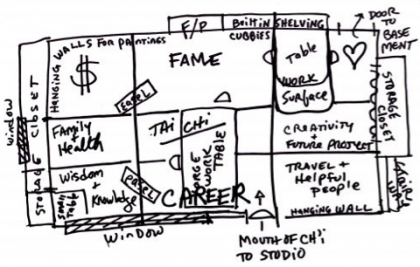 In her article, “Bring Joy and Energy into Your Art Studio” at www.clothpaperscissors.com, Cate Prato discusses the quilt-specific studio, offering tips on taming the stash. She also directs readers to an article, “East Meets West in the Quilting Studio” by Lois Hallock in the Winter 2011 issue of Cloth Paper Scissors Studios magazine available through Interweave Press online store in print & digital formats.
In her article, “Bring Joy and Energy into Your Art Studio” at www.clothpaperscissors.com, Cate Prato discusses the quilt-specific studio, offering tips on taming the stash. She also directs readers to an article, “East Meets West in the Quilting Studio” by Lois Hallock in the Winter 2011 issue of Cloth Paper Scissors Studios magazine available through Interweave Press online store in print & digital formats.
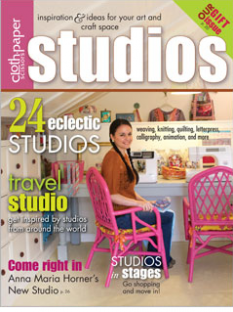
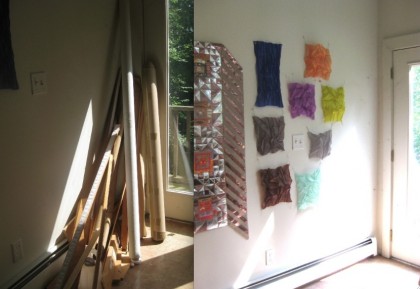 The sites above, each with numerous links, are but a sampling of those available if you’re seeking to revitalize your studio.
The sites above, each with numerous links, are but a sampling of those available if you’re seeking to revitalize your studio.
Plunge in and let the energy flow…
____________________
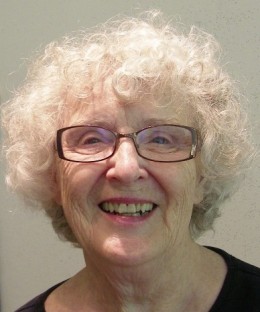 Patricia Malarcher, a studio artist whose work has been shown internationally, is also an independent writer and former Editor of the Surface Design Journal.
Patricia Malarcher, a studio artist whose work has been shown internationally, is also an independent writer and former Editor of the Surface Design Journal.
She lives and works in Englewood, New Jersey.


5 Comments
Saaraliisa says
September 4, 2012 at 9:41 am
Thank you Patricia, that gives me courage to change things, I have been thinking about it for awhile for the same reasons you began, encaustic! A fun article.
Patty hawkins says
September 6, 2012 at 1:30 pm
Fantastic thoughts, Patricia, I always seem to have to redo my studio; purging things, reorganizing - according to the MORE important "ingredients" I currently choose for making art! Thanks so much! Great article!
Katy Allgeyer says
September 7, 2012 at 8:47 pm
Thanks Patricia for including my blog in your article. First I want to wish you the best of luck in your art endeavors. Second I want to say that I disagree with the following "Jeffs advocates purging what’s not in use, including artwork that no longer seems relevant. She considers purging a chance to offer work as rewards for support given by friends or family or as donations to community causes or charity. “[Donating outdated work] has the happy result, not only of the artists feeling ‘lighter,’ but of increasing their standing among their community.”" IF YOU CHOOSE TO DONATE ART AT ALL, in order to make it good for your feng shui and to increase your standing in the community you should ONLY donate RELEVANT and YOUR BEST work, NOT outdated or inferior work. And, before you do that, you should really consider whether it is in your best interest as an artist to have your work out there at lower prices, uncontrolled by you, or having collectors buy your work at cheap prices from a charity instead of from you, etc etc etc. I think this article is a must read for charities and artists: http://mariabrophy.com/business-of-art/the-problem-with-donating-art-and-the-solution.html Purging is good, though. But think carefully before having your name out there on a piece that is less than great. If you feel that way about the piece, don't send it out into the world. Destroy it and start again. Remember, your intentions create ch'i. Putting something you don't love out there is bad feng shui.
feng shui dormitorio says
April 30, 2013 at 11:47 pm
The most common number is five, it is usually preferred, because each rod represents one of the five elements. This article is about applying the methods of feng shui to just one room in the home. Buying this type of property may cost you more as you may spend more money for renovation to correct the bad interior Feng Shui.
Spotlight on the Surface Design Association - TextileArtist.org says
January 3, 2014 at 5:03 am
[...] of NewsBlog’s most popular stories has been Feng Shui Your Studio to Maximize Creative Flow by our former journal editor and artist Patricia Malarcher. Readers also flock to UK artist Anne [...]
Related Blog Articles
Creative Process
“Fringe: On the Edge of Fiber” — Out Now!
Creative Process
Friday Fibers Roundup: Craft & Color
Creative Process
“Standing Tall: A Heart-FELT Reflection” by Martien van Zuilen